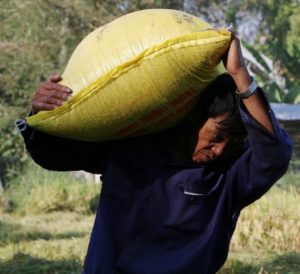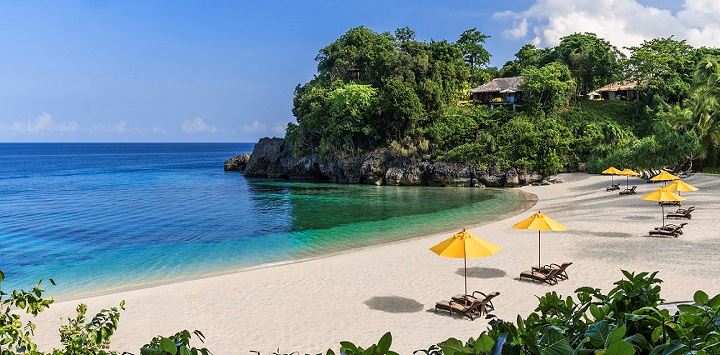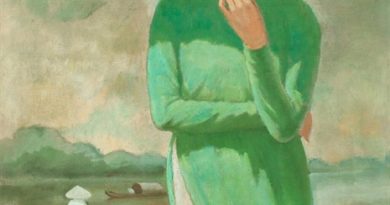ASEAN PHOTOGRAPHY – COLUMNISTS: Second Opinion By Gideon Lasco – Photography as (mis)representation
BANYUGAN BEACH – Shangri-La’s Boracay Resort and Spa., Boracay
Photography as (mis)representation
.
.
Photography today has become the sine qua non of traveling; for many, pictures are necessary to ratify the “being there” in a certain place. Similarly, photographs cement the eventhood of certain moments, allowing them to be instantly shared through social media, and memorialized for years to come.
But as photography becomes more and more integral to our modes of experiencing the world, how do we handle the people who fall under the gaze of our cameras? How do we represent them, and what are the ramifications of these representations?
These questions come to mind in the wake of the recent controversy over the photographs of two Filipino actors, Billy Crawford and Coleen Garcia. Set in rural Ethiopia, the pictures raise the issue of cultural (in)sensitivity; many pointed out the sheer impropriety of using seemingly impoverished women and children as background and juxtaposing them with a privileged celebrity couple.
.
– YOUR ADVERTISEMENT HERE –
.
Crawford has since apologized, saying that the photos were “taken out of context.” Beyond the photo shoot itself, however, we should also reflect on how the pictures we take of others can affect them in inadvertent ways. To begin with, everyone knows the feeling of being “misrepresented” in a picture; for instance, if someone posts a group photo with you in it, the poster may not care about your appearance — or notice that your eyes are closed. Regardless of your approval, your picture is there for the world to see.
Things get more complicated when strangers fall under our photographic gaze. When someone becomes a meme or a viral “photobomber” against their will, can they demand that their photos be removed? Who “owns” our images — and the rights to our faces? In many communities around the world, locals demand payment if tourists want to photograph them. But Crawford is right in one respect: Photographs do get taken out of context — and it is precisely their decontextualized nature that makes them a potent medium for misrepresentation. With one photo of an intern texting while in the ER, one can tell a story of an irresponsible doctor, when in fact he was dutifully informing his consultant about their patient’s condition.
This misrepresentation can affect not merely individuals, but entire communities and nations. In the early 20th century, Americans juxtaposed themselves with Philippine “Islanders” to furnish an image of savagery, and help legitimize their “civilizing mission.” Decontextualized from the richness of their culture, the “Islanders” looked primitive in the eyes of Westerners; detached from their personalities and life stories, they became mere “specimens” of certain races—or props to evoke the exotic. As Resil Mojares wrote, photography can be a form of violence when it serves to reinforce narratives detrimental to those being photographed.
The challenge, then, is to be mindful that the seemingly innocuous act of taking pictures can perpetuate notions of otherness, especially among the marginalized. When our sole interest in people is for them to serve as the backdrop to our adventurous and glamorous lives — or to help sell a product or service — we do them injustice especially when we have the means to do more. Indeed, we can grant them the complexity they deserve by telling their stories and struggles, foregrounding them not just in our pictures but also in our social consciousness.
Of course, photographs can also be used by “others” to represent themselves as “self” and, in doing so, balance out their misrepresentations: Even Filipino colonial subjects used photography to challenge how they were portrayed. However, the reality is that the people who are objectified in photographs are often those who do not have the means to circulate their own images, let alone their own ways of seeing the world. And so those of us who take pictures with and of others are called upon to do it in a fair and respectful way — and this is especially true for those who, like Crawford and Garcia, have a wide reach. Photography may yet do the world justice, but not while it reinforces its many asymmetries — and relegates to the background the people and places that matter.
Comments to [email protected] / By: Gideon Lasco- @inquirerdotnet / Philippine Daily Inquirer / 05:22 AM March 15, 2018 /
.
PHOTO OF THE DAY: HARVEST

A farmer carries a bag of rice after harvesting it in the winter-spring crop in the Mekong Delta province of Hậu Giang. — VNA/VNS Photo Duy Khương
.
All photographs, news, editorials, opinions, information, data, others have been taken from the Internet ..aseanews.net | [email protected] | For comments, Email to : Goldenhands Arts Club | [email protected]| Contributor










